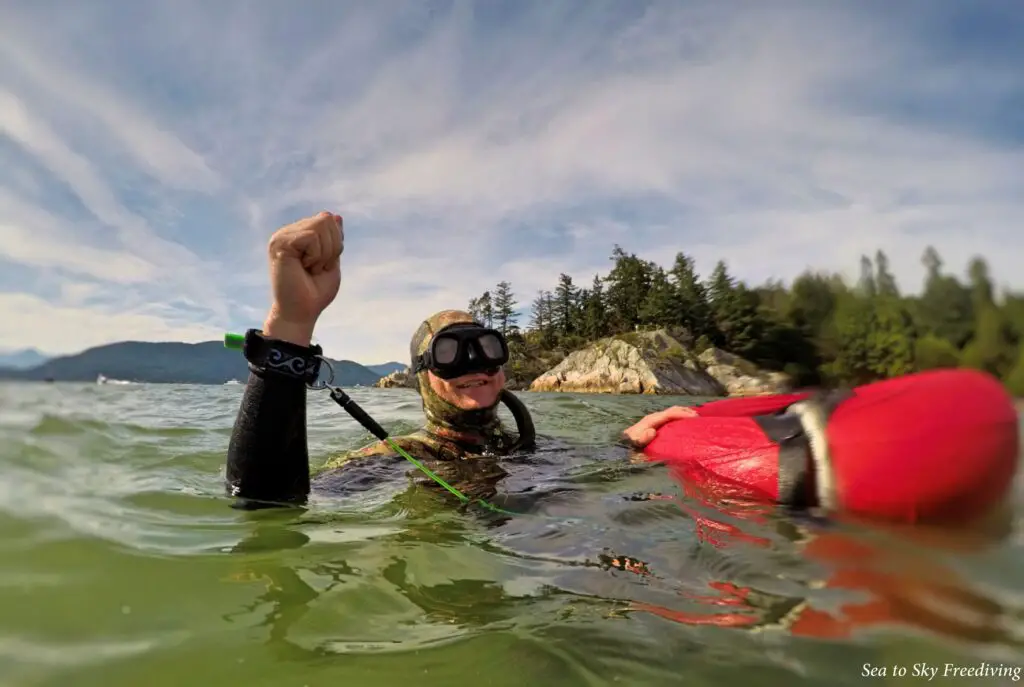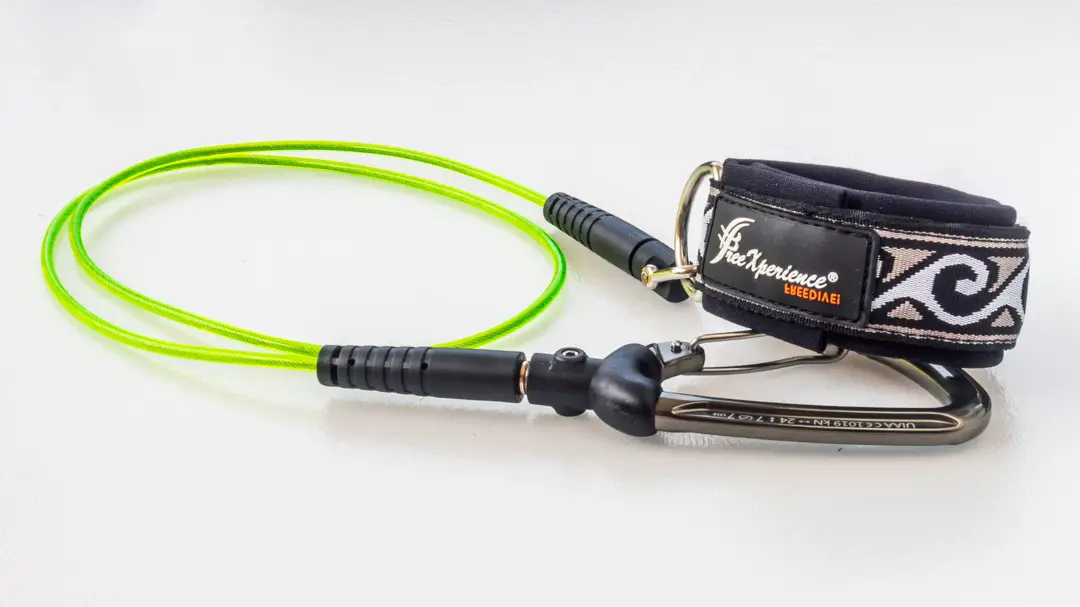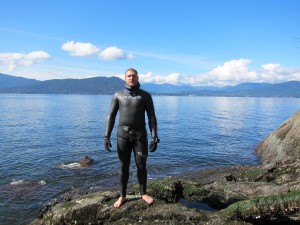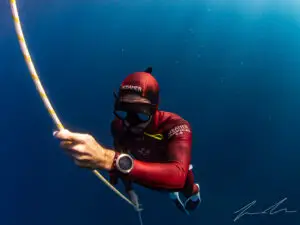FreeXperience’s has done it again. They took the basic lanyard, analyzed each component, and improved the functionality of the product. The new FreeXperience lanyard models are versatile, modular and easy to use over many disciplines.
We tested FreeXperience’s new wrist lanyard and in this article we’ll discuss the pros, the cons and why we think in low visibility conditions this is the lanyard of choice. As always; tried and tested in the cold and dark waters of Vancouver, Canada.
Highlights of the FreeXperience Wrist Lanyard:
- Comes in different lengths: 90cm (3 feet) or 120cm (4 feet)
- Modular components to switch between freediving disciplines
- Two carabiners available: steel and aluminum
- High visibility PVC coating on a steel lanyard cable
- Easily switch from wrist to hip belt
- Safety tests performed on lanyards
Modular Components
Having modular freediving fins can make your diving life and travels easier. Similarly, you want your lanyard to offer interchangeable features.
This is without a doubt the most attractive feature of the FreeXperience lanyard. In freediving, there are many disciplines, each requires the body to be positioned differently. Free Immersion (FIM) has the lanyard attached to the ankle as you pull down the line. Constant Weight (CWT) prefers an attachment to the wrist, as you swim down with fins.
Therefore, a freediver needs different length options depending on the discipline they perform. Rather than buying two lanyards, you simply switch out the cable for a longer one. This interchangeability is something freedivers should consider when buying a lanyard.
Diving Constant Weight No Fins (CNF) in the morning and then CWT in the afternoon? Simply switch out the wrist band for the belt option. Once again, this gives flexibility for the freediver to perform many disciplines while traveling with a minimal amount of gear.
We love this option for our readers, since it saves both money and provides a large safety improvement compared to regular lanyards. Each freediving discipline has a lanyard option tailored to its specific needs. This results in less entanglements and reduces the risk of accidents.
High Visibility Cable
Flexible PVC coats the 90cm (3 feet) or 120cm (4 feet) steel cable. This provides a smooth feel to the cable an increases the longevity of the product. The new cable design uses a lime green colour. This colour is in the spectrum most easily captured by the human eye. Ever wonder why ambulances in some countries are coloured lime green?
We tested this lanyard cable in the dark and cold water of Vancouver, Canada. At 20 meters, not much light passes from the surface. Yet, the lime green colour stands out well in the almost pitch-black background. Easily visible by the safety diver, the lanyard’s colour definitely adds to the overall safety of the dive.

The Carabiner
Many freedivers prefer the carabiner to stay behind them during a FIM. A lighter, aluminium carabiner will allow for that. However, in CWT, a heavier carabiner is required for it to sink above the arms. These are specific characteristics that make a dive more enjoyable, but also safer. This feature is also essential for crossing over to different disciplines.
The shape of the carabiner plays a minor role as well. In sport climbing, an “asymmetric D-shape” carabiner is specifically used for quick-draws. This allows for easier clipping of the rope, but also decreases the likelihood of back-clipping (accidental unclipping).
The asymmetric D-shape should be the standard for all lanyards. This specific shape keeps the rope in one corner of the carabiner. Of course, these features are less important in freediving than in sport climbing. However, we should draw from the experience in materials testing for climbing equipment.
Lastly, the double swivel. This would seem obvious, but many lanyard manufacturers don’t include this. The FreeXperience lanyard cable has a double swivel attachment on each end. Having a low-friction swivel at both sides will reduce the potential for entanglement during high current conditions. Easily adjusted with a hexagon screw connection on either end. This adds another safety feature to the practicality of the product.
Lanyard Testing
This is the part we were very excited about. FreeXperience is the only lanyard manufaturer (that we are aware of) that went through the trouble to testing their products to the breaking point with materials testing machines. In materials engineering, knowing the maximum capacity or strength of any product is essential in designing it safely and with an appropriate safety factor.
The fact that the new lime green lanyard passes repeated sudden force tests and has a breaking point of 220 kg (485 lbs) is quite impressive. It would be difficult to generate such forces underwater.
FreeXperience has done their homework in calculating the sudden force and constant force tests for freediving scenarios. They mention the importance of having some elasticity in the cable. Just like in rock climbing, a fully static cable can generate greater force on impact. This could increase the likelihood of breaking the lanyard and injuring the freediver.
Although, not fully comprehensive, this document creates a path in the direction for freediving safety. FreeXperience also offers advice to judges and competition organizers on what tests they should perform for consistency. It is no wonder that the FreeXperience’s lanyard has been chosen as the official lanyard of the 2019 AIDA World Championships in France.
Freedive Wire’s Suggestions
There aren’t many cold water freedivers out there, but we need safety gear as well. Most equipment is designed for warm water freediving, and for good reason. We would like to, however, make two suggestions regarding the FreeXperience lanyard (and lanyards in general).
Firstly, when using 7-8 mm neoprene wetsuits we have increased circumference of the wrists and ankles. In this situation, the wrist strap velcro only connects over a small surface area. Therefore, the attachment feels slightly inadequate.
Secondly, when wearing thick 5mm gloves or mitts, we have reduced dexterity. Therefore, grabbing the quick release lash on the wrist strap can be difficult. Although, we understand there are benefits for having this style of quick release.




